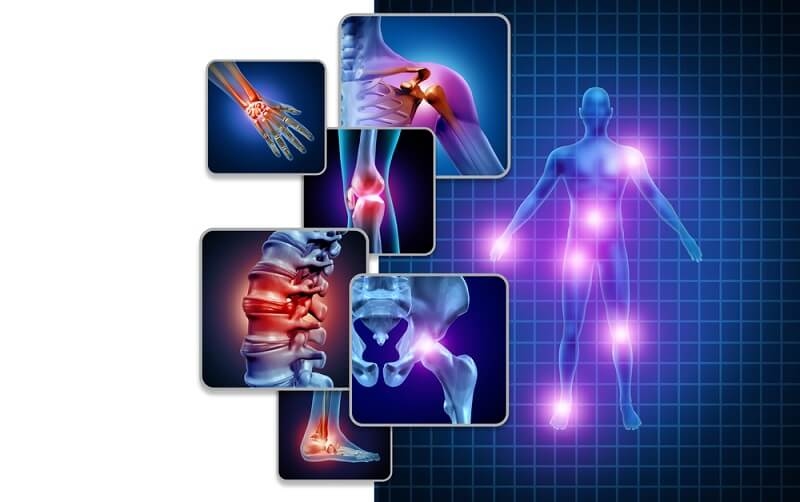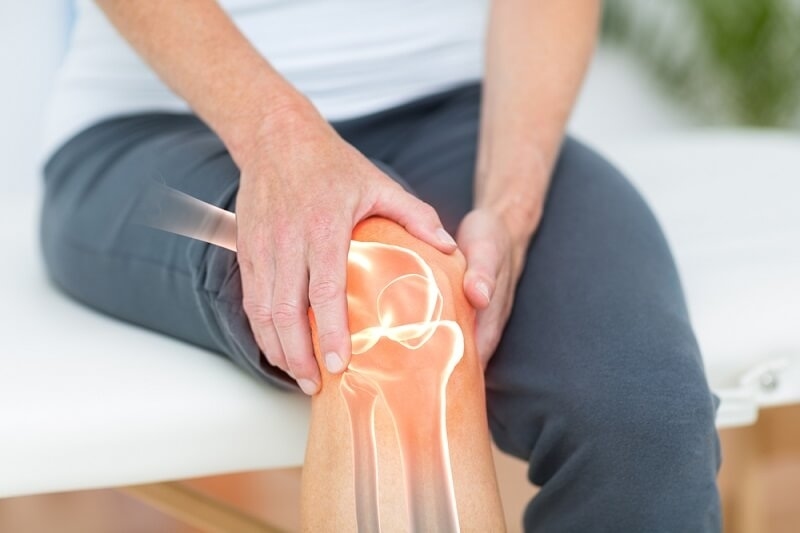What Is Arthritis? Learn Its Causes, Types, Symptoms and Treatments

Arthritis is a group of chronic conditions that primarily target the joints. The joints are complex structures where two or more bones meet, and they are crucial for movement. Cartilage covers the ends of the bones in a healthy joint, providing a smooth surface that allows them to glide effortlessly. Synovial fluid lubricates the joint, further reducing friction.
What is arthritis?
Arthritis disrupts this delicate balance. Inflammation, a common feature of arthritis, can damage the cartilage, causing pain and stiffness. Over time, this inflammation can lead to joint deformities and impair mobility. Some forms of arthritis also affect other body systems. For example, rheumatoid arthritis can lead to complications in organs like the heart and lungs, while psoriatic arthritis often accompanies skin conditions like psoriasis.
Different Types of Arthritis

- Inflammatory arthritis: This category comprises Rheumatoid Arthritis (RA), Ankylosing Spondylitis, and Psoriatic Arthritis. In these cases, the immune system mistakenly targets the joints, leading to inflammation and subsequent joint damage.
- Degenerative or mechanical arthritis: Osteoarthritis (OA), the most prevalent form, results from the gradual breakdown of joint cartilage due to wear and tear over time. OA often affects weight-bearing joints such as the knees and hips.
- Connective tissue disease (CTD): Lupus and Scleroderma fall into this category, where the immune system is a working defense that targets connective tissues, including the joints. Arthritis becomes a common manifestation of CTDs.
- Infectious arthritis: Joint infections caused by bacteria, viruses, or fungi result in infectious arthritis. Timely treatment is crucial to prevent rapid joint damage.
- Metabolic arthritis: Gout, a type of metabolic arthritis, occurs when there is an accumulation of uric acid in the joints, leading to sudden and severe joint pain and inflammation.
- Childhood arthritis: Juvenile Idiopathic Arthritis (JIA) affects individuals under 16, with several subtypes presenting different challenges. Early diagnosis and management are essential for optimal growth and development.
- Septic arthritis: This type of arthritis is caused by a joint infection, often stemming from bacteria. If not promptly treated with antibiotics, it can result in significant joint damage.
Symptoms of Arthritis

Arthritis manifests through various symptoms, which can significantly impact an individual's daily life. Understanding these symptoms is essential for early detection and effective management of the condition:
- Joint Pain: Arthritis often presents with persistent joint pain, which can range from mild discomfort to severe, debilitating pain. The pain is usually localized to the affected joint or joints and may worsen with movement or after periods of inactivity.
- Joint Swelling: Inflammation of the joints leads to swelling, creating a visibly enlarged or puffy appearance. Swelling may contribute to the feeling of stiffness and limit the range of motion in the affected joints.
- Stiffness: Joint stiffness is a common symptom, particularly upon waking up in the morning or after periods of inactivity. This stiffness can impede movement and gradually improve with gentle activity throughout the day.
- Decreased Range of Motion: Arthritis can result in a reduced range of motion in affected joints, making it challenging to perform regular activities. The limitation in motion can impact daily tasks like walking, climbing stairs, or reaching for objects.
- Fatigue: Many individuals with arthritis experience persistent fatigue, which can be attributed to the body's inflammatory response and the effort required to cope with chronic pain.
- Systemic Symptoms: Inflammatory types of arthritis, such as rheumatoid arthritis, may lead to systemic symptoms like fever, weight loss, and general malaise.
Causes of Arthritis
Understanding the causes of arthritis involves recognizing the diverse factors that contribute to the development of this complex condition:
- Genetic Predisposition: Genetic factors play a significant role in some types of arthritis, such as rheumatoid arthritis and ankylosing spondylitis. Individuals with a family history of arthritis may have an increased risk of developing the condition.
- Immune System Dysfunction: In autoimmune arthritis, the immune system mistakenly attacks the body's tissues, including the joints. Rheumatoid arthritis, lupus, and psoriatic arthritis are examples of an overactive immune response contributing to joint inflammation.
- Joint Injuries: Physical trauma or injuries to the joints, such as fractures or ligament tears, can increase the risk of developing arthritis later in life. The damaged joint may not heal properly, leading to accelerated wear and tear.
- Infections: Bacterial, viral, or fungal infections can infiltrate the joints and trigger inflammatory responses. Untreated infections can lead to infectious arthritis, causing rapid joint damage.
- Metabolic Factors: Metabolic arthritis, like gout, results from the accumulation of uric acid in the joints, leading to sudden and intense episodes of joint pain and inflammation.
- Age and Wear and Tear: Osteoarthritis, the most common form of arthritis, often results from the natural wear and tear on joints over the years. Aging is a significant risk factor, with the likelihood of developing osteoarthritis increasing with age.
Treatment of arthritis
- Medications: Medications are pivotal in managing arthritis symptoms and slowing disease progression. Nonsteroidal anti-inflammatory drugs (NSAIDs) help reduce pain and inflammation, while disease-modifying antirheumatic drugs (DMARDs) aim to modulate the immune response in inflammatory arthritis. Corticosteroids may also be prescribed for short-term relief.
- Natural remedies & diet: Complementary approaches include natural remedies and dietary modifications. Supplements such as omega-3 fatty acids and turmeric have anti-inflammatory properties that may help alleviate symptoms. Maintaining a healthy diet and managing weight can also contribute to joint health.
- Physical therapy: Physical therapy is a cornerstone of arthritis management. Customized exercise programs designed by physical therapists can improve joint function, flexibility, and strength. This approach is precious for individuals with degenerative arthritis like osteoarthritis.
- Surgery: In cases of severe joint damage, surgery may be recommended. Joint replacement surgery, such as hip or knee replacement, can significantly relieve pain and restore function, allowing individuals to regain mobility and independence.
Risk Factors of Arthritis
Recognizing the risk factors associated with arthritis provides valuable insights into who may be more susceptible to developing the condition:
- Age: The risk of arthritis increases with age, with osteoarthritis being more prevalent in older individuals.
- Gender: Certain types of arthritis, such as rheumatoid arthritis, are more common in women than men.
- Genetics: A family history of arthritis can increase an individual's susceptibility to developing the condition.
- Joint Injuries: People who have experienced joint injuries, whether through sports, accidents, or repetitive stress, may be at a higher risk.
- Obesity: Excess body weight places additional stress on weight-bearing joints, increasing the risk of developing arthritis, particularly osteoarthritis.
When to see a doctor?
Recognizing when to seek medical attention is paramount for early diagnosis and effective arthritis management. If you experience persistent joint pain, swelling, or stiffness or notice a decrease in joint mobility, it is essential to consult a healthcare professional. Early intervention can help prevent further joint damage and improve the overall prognosis of the condition.
Conclusion
Arthritis, with its myriad forms and symptoms, presents a formidable challenge. Individuals can actively engage in managing their condition. Whether through medications, natural remedies, physical therapy, or surgery, a spectrum of approaches exists to alleviate symptoms and enhance quality of life. By recognizing risk factors and seeking timely medical advice, individuals can empower themselves to navigate the complexities of arthritis, working towards maintaining joint health and overall well-being. As research continues to advance, the hope is that new treatment modalities will emerge, offering even more effective solutions for those grappling with the impact of arthritis on their lives.
This content was created by AI
-1717753922-r.jpg)